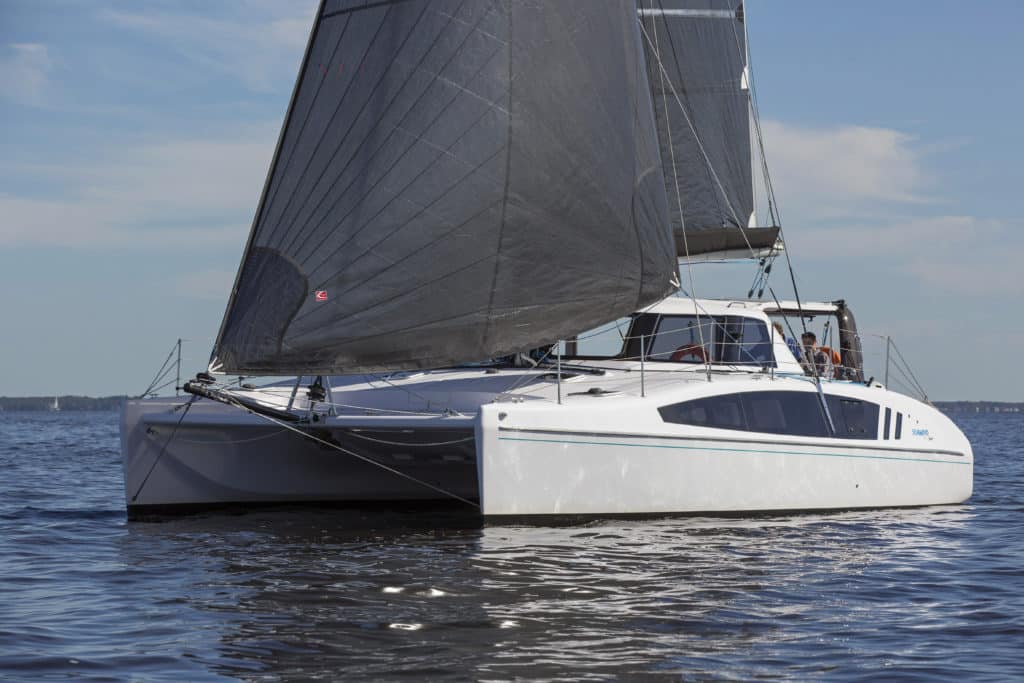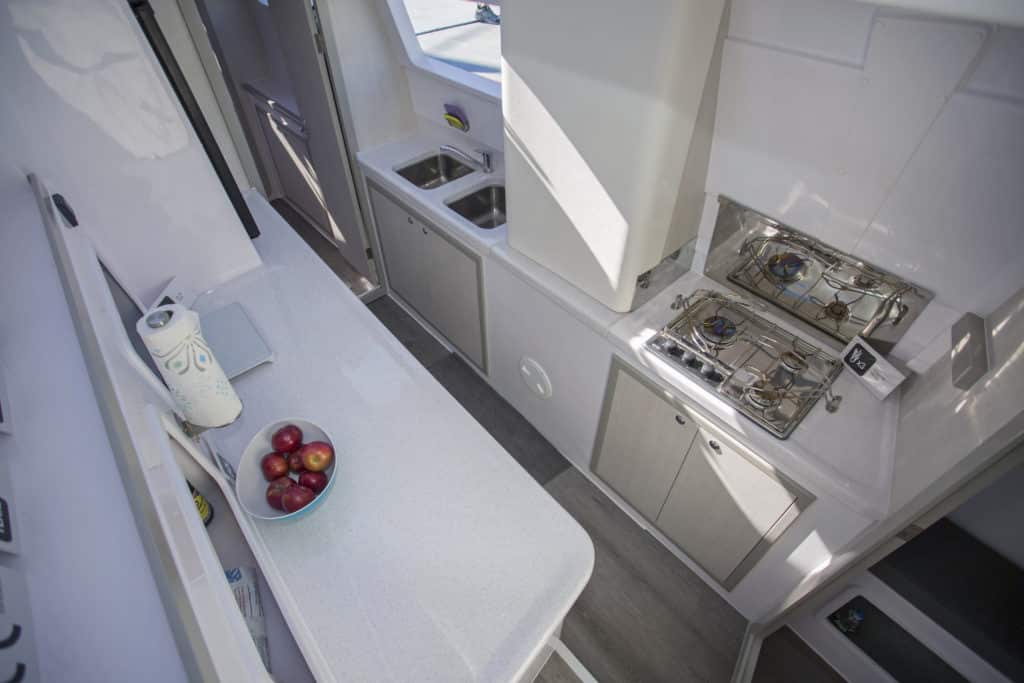
It doesn’t happen at every go-round, but occasionally, Cruising World ’s Boat of the Year judges are confronted with a sailboat that really can’t be compared to its peers but deserves top accolades nonetheless. At the U.S. Sailboat Show last fall, the Seawind 1190 Sport proved to be just such an entry, and so impressed the panel of experts with its execution and details that it was given the Judges’ Special Recognition Award.
Compared to the more plush full-on cruisers being considered in the Catamarans Under 50 Feet category, the 1190 was different by design, which became readily apparent when comparing displacement-to-length ratios. Lighter boats are more easily driven and therefore theoretically more fun to sail. The 1190’s magic number was 136; the competition’s ranged from 171 to 191. Out on the water, even in a meager 3 knots that barely stirred a ripple, we managed to coax the speedo to 2.5 knots. “It really is a boat that moves,” noted judge Tim Murphy. Theorem proved.
The 1190 is modeled loosely along the lines of the Seawind 1160, itself a BOTY winner when it made its debut in 2007. Then, the boats were built in Australia. In the interim, Seawind owner and Aussie sailor Richard Ward purchased Corsair Marine and consolidated all manufacturing at that company’s Vietnam facility.
True to its name, the 1190 is intended to be sportier than its comfortable-cruising sibling. Carbon was used in the layup of its crossbeam and arch to add stiffness and reduce weight. Pounds were also saved by moving to fiber standing rigging, rather than wire, and replacing twin 30-horsepower Yanmars and saildrives with a couple of 20-horsepower outboards that can be tilted up while sailing to eliminate drag. Also contributing to hull slipperiness are daggerboards, used instead of stub keels. The net result is weight savings of about 1,300 pounds.

The 1190’s taller double-spreader rig carries a square-top main. A self-tending working jib is easily handled when tacking upwind; off the breeze, either a screecher or spinnaker can be set on the carbon-fiber sprit that comes standard with the boat. Twin wheels located to either side of the cockpit give the helmsman several options when driving: Sit outboard on the hull and enjoy the breeze, or duck under the bimini, out of the sun and weather, and take advantage of excellent sight lines forward through the removable tempered-glass windows that let lots of light pour into the saloon.
The saloon itself can be airy and open if Seawind’s trademark trifold door is lifted and stored under the cockpit bimini top, or it can be snug against the elements with the door down. Either way, the interior is laid out quite well for extended voyaging, with the galley down in the starboard hull and cabins fore and aft. To port, the owners cabin is forward with an athwartship bunk; aft is located the best head and shower we saw at the show (there’s an option to have a second head in the starboard hull). Throughout, construction appeared to be well-executed. The hull is resin-infused, with a foam core. The deck, also cored, is vacuum-bagged. Really, the judges’ only nit was that fuel hoses leading from the gasoline tank to the engine were not up to U.S. specs, a matter easily corrected either at the factory or by the dealer. Throughout, top-quality hardware from suppliers such as Lewmar and B&G is employed; sails are by Doyle. The boat’s sailaway price of $442,000 includes two 125-watt solar panels and AGM batteries.
Summing up his notes, judge Ed Sherman concluded, “If I were going to consider a multihull, this is one of the boats I’d look at for sure. … It would be a lot of fun, a lot of fun. I mean, that’s a great couple’s boat.”
Mark Pillsbury is CW’s editor.








